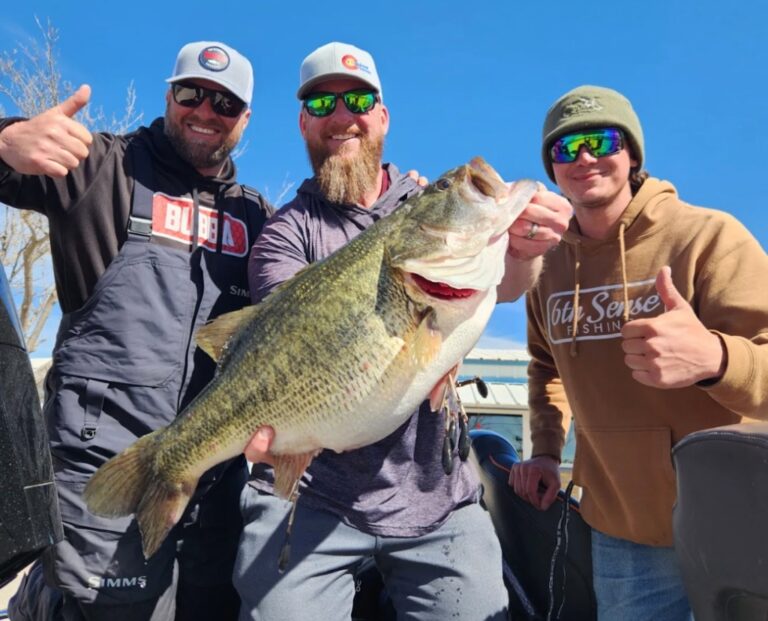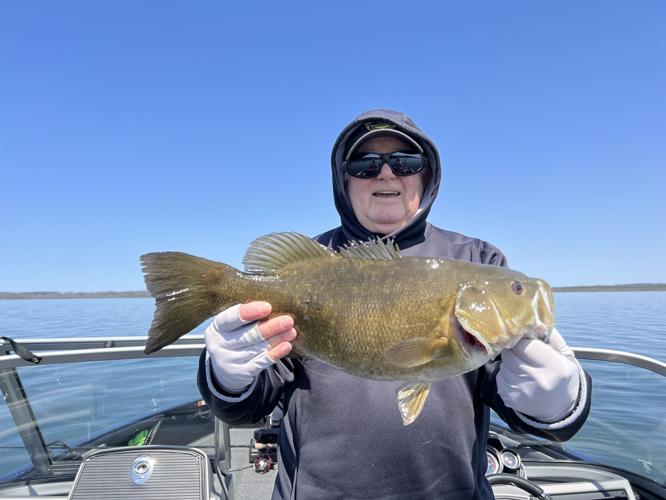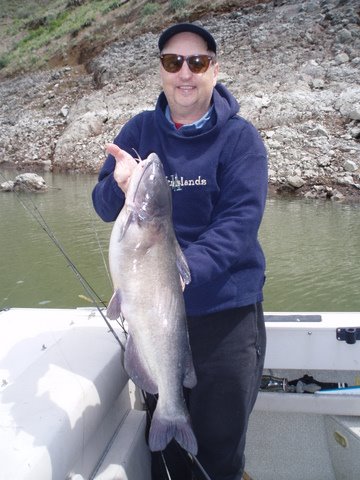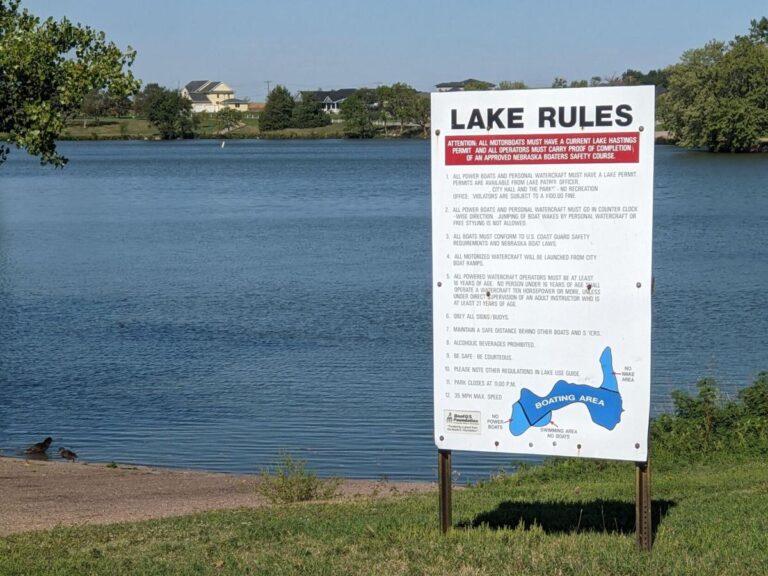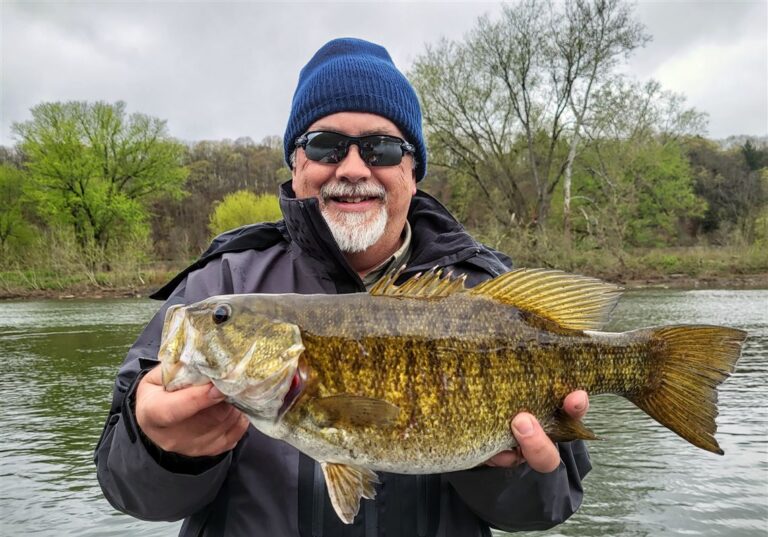Lake fishing equipment and gear include fishing rods, reels, lines, lures, hooks, weights, and other accessories used to catch fish in freshwater environments. When heading out for a day on the lake, having the right equipment at your disposal is a must.
Whether you are a seasoned angler or a beginner, selecting the proper gear can greatly affect your success in reeling in a catch. In this article, we will discuss the various types of equipment that make up a complete fishing setup for lake fishing.
We will cover everything from rods to lures and provide some tips for selecting the right gear based on your skill level, the type of fish you are after, and environmental conditions. With this guide, you will be well-prepared for your next trip to the lake.

Credit: deepersonar.com
The Top 3 Must-Have Fishing Rods For Catching More Fish In Lakes
The Spinning Rod: How To Choose The Ideal Size And Action For Your Lake Fishing
When it comes to lake fishing, having the right equipment is crucial. Selecting the correct spinning rod size and action can enhance your chances of catching more fish. Here are some essential tips to help you choose the ideal spinning rod for your lake fishing experience:
- Determine the power and action: The fishing rod’s power reflects its strength, while the action refers to the rod’s flexion. Spinning rods offer various power and action combinations, and choosing the right one will depend on the fish you are targeting.
- Select the right length: Spinning rods can range from as short as 4 feet to as long as 14 feet. The length you use depends on the techniques and types of fish you aim to catch. Shorter rods are ideal for short casting distances, while longer rods offer increased casting distance.
- Weight and comfort: A fishing rod’s weight and comfort are critical to your continued satisfaction with your rod. A lightweight rod will help reduce fatigue and allow for easier handling when making critical moves, such as setting the hook. Additionally, choose a handle that is comfortable and easy to grip.
The Casting Rod: The Pros And Cons And How To Use It For Lake Fishing
A casting rod is another excellent option for lake fishing. While some anglers prefer spinning rods, a casting rod can give you more precise control and casting accuracy. Here are some pros and cons of using a casting rod for lake fishing:
Pros:
- Better casting accuracy: Casting rods offer higher casting precision, making it easier to place your bait where the fish are. This makes it ideal for catching fish that are hiding around obstructions like docks or submerged trees.
- Power and control: Casting rods offer more power and greater control over your bait. When you’re looking to fish with heavier lures, a casting rod will allow you to have better control.
Cons:
- Learning curve: Casting rods have a learning curve and can take time to master. This can lead to frustration when trying to cast with accuracy.
- Technique: Casting rods require you to control the spool with your thumb, which can take a bit of getting used to. But with some practice, you’ll be able to cast with efficiency and accuracy.
The Fly Rod: The Different Types And Best Practices For A Perfect Day On The Lake
Fly fishing is an exciting and challenging form of fishing that requires a specialized fly fishing rod, known as a fly rod. Fly rods are typically longer and lighter than other types of fishing rods, with different weights and speeds depending on the size and type of fish you are trying to catch.
Here are some different types of fly rods and best practices for using them on the lake:
- Length and weight: Fly rods are classified according to their length and weight. The weight indicates the rod’s “backbone,” and the length determines how far your line will be cast. Choosing the right weight is essential for successful fly fishing, and picking the right length based on your fishing style is crucial.
- Fast action vs. Slow action: Different fly rods have varying degrees of action, and making the right choice is vital. Fast-action rods are stiffer and more robust, providing more accuracy, while slow-action rods are more flexible and offer more finesse and delicacy.
- Know your flies: Fly fishing requires a specific set of flies that imitate insects, baitfish, and other prey species. Knowing what flies to use will help you catch more fish. The art of selecting flies comes with experience, but a quick tip is to choose a fly that matches the size and color of the insects in the vicinity of the lake.
The Must-Pack Fishing Reels For Enhancing Your Catching In Lakes
Lake Fishing Equipment And Gear
Fishing in lakes can be a very enjoyable experience for individuals who take it seriously. However, the difference between a good and great lake fisherman lies mainly in the type of reel they use. That said, the following are some of the must-pack fishing reels for enhancing your catching in lakes.
The Spincast Reel: A Beginner’S Guide On Choosing The Right Features For Lake Fishing
Spincast reels are popular among beginners and young anglers due to their simplicity and ease of use. Choosing the correct features for the reel can help increase the chances of a big catch. Below are some of the things you need to consider when choosing the spincast reel for lake fishing:
- Gear ratio: The gear ratio is a measure of the number of times the spool rotates in one turn of the handle. Selecting a reel that has a high gear ratio can help you retrieve your lure faster.
- Ball bearings: Ball bearings are responsible for smooth line movement, and as a rule of thumb, the more ball bearings a reel has, the smoother it will perform.
- Line capacity: This is the maximum amount of line that your spincast reel can hold. Choosing the right line capacity will depend on the type of fish you want to catch.
The Baitcasting Reel: Tips On How To Optimize Your Lake Fishing Experience With This Reel
Baitcasting reels are well-suited to lake fishing due to their accuracy and casting distance. Below are some tips to help you get the most out of your baitcasting reel when fishing in lakes:
- Practice your casts: Baitcasting reels require skill to cast properly, but with practice, you can be accurate and catch more fish. Before hitting the lake, visit a nearby park and practice your casting technique.
- Choose the right line: When selecting a line, consider factors such as the fish species you are targeting, water depth, and weather conditions. A good line choice will reduce the chances of a fish escaping.
- Adjust your brakes: Baitcasting reels typically have adjustable brakes to help manage the spool. Adjusting the brakes can help you make a more accurate cast.
The Fly Reel: The Best Models And How To Pair Them With Your Fly Rod For Maximum Efficiency
Fly reels and rods work together to form a complete system, and pairing them correctly maximizes efficiency and brings more fish to the boat. Some considerations when selecting the right fly reel for lake fishing include:
- The drag system: The reel’s drag system is essential when catching fish that take long runs or fight fiercely. A good drag system of a fly reel allows it to provide a smooth and constant tension to tire the fish.
- Weight: Fly reel weights range from two to ten. Smaller weights are great for small fish, while larger weights are ideal for pursuing trophy fish. Determine which weight suits your preferred species and adjust accordingly.
- Line capacity: The line capacity of the fly reel should match the weight of the fly line. Too little capacity can result in a reduced casting distance, while too much reduces accuracy.
Selecting the proper reel and understanding the different features allow anglers to fish with ease and improve their chances of a catch. Whether starting as a beginner or expanding skills, choosing the right fishing reel is critical to achieving success when fishing in lakes.
Conclusion
As the saying goes, “give a man a fish, and you feed him for a day; teach a man to fish, and you feed him for a lifetime. ” The right fishing equipment and gear for lake fishing can mean the difference between a great day on the water and a frustrating one.
It’s important to invest in quality rods, reels, lures, and lines to improve your chances of success. Don’t forget about the importance of clothing and accessories, such as hats, sunglasses, and sunscreen, for a comfortable day of fishing. Additionally, it’s important to remember to properly maintain and care for your equipment to prolong its lifespan.
With the right gear and knowledge, anyone can enjoy a successful day of lake fishing. So, whether you’re a seasoned angler or a beginner, take the time to invest in the proper equipment and gear to make the most of your fishing trips.

